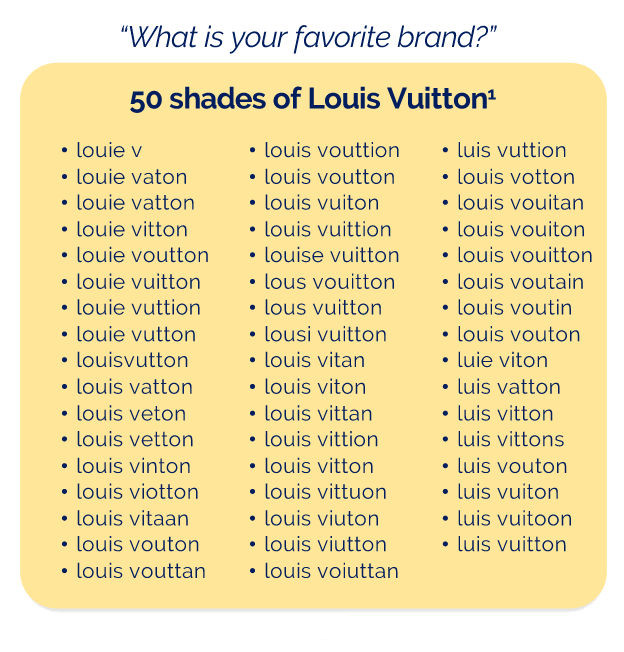Artificial Intelligence for a luxury fashion house

The company
A French luxury fashion house with global operations and more than $1 billion in annual revenue.
Our client
Head of Consumer Insights for the US division.
The problem
The Consumer Insights team needed to analyze data from an online survey of 1500 respondents, including free-form text data. This is data from survey questions like “What is your favorite brand?” where respondents type their own answers instead of choosing from a set of options. Free-form text answers provide better insights into consumer preferences and attitudes, but can contain spelling mistakes, typos, missing space between words. Traditionally, this type of data is analyzed manually (i.e. a human analyst reads and counts all responses) because off-the-shelf analytics tools (e.g. Excel, SPSS, R) cannot do it. This is obviously very time-consuming and impractical with large surveys with thousands of respondents.
Below is an example of all the different spellings of the brand Louis Vuitton typed by survey respondents.
Below is an example of all the different spellings of the brand Louis Vuitton typed by survey respondents.

Strategic goals to achieve
Drastically reduce the time needed by an analyst from the Consumer Insights team to analyze free-form text, so that they can deliver faster a report with useful insights from the survey and recommendations for company executives.
What we did
We developed a custom software tool in less than 2 weeks to automatically process thousands of free-form text data points and make them ready for statistical analysis. Specifically, our algorithm automatically grouped all (mis)spellings of a brand in order to calculate the total number of occurrences in the survey data. We leveraged Machine Learning techniques related to Natural-Language Processing (NLP) to predict the actual brand that a (mis)spelling most likely referred to. As a result, instead of having a human analyst count manually the number of occurrences of each brand (including misspellings), the algorithm produced the results automatically and in seconds.
The output of the tool was the list of brands mentioned in the responses along with their number of occurrences. This in turn was incorporated into the overall data analysis of the survey performed by the human analyst to find interesting business insights.
The output of the tool was the list of brands mentioned in the responses along with their number of occurrences. This in turn was incorporated into the overall data analysis of the survey performed by the human analyst to find interesting business insights.
Benefits
The Consumer Insights team was able to gain useful insights from the free-form text data that would have been impossible or taken too long to analyze without the automation tool.
